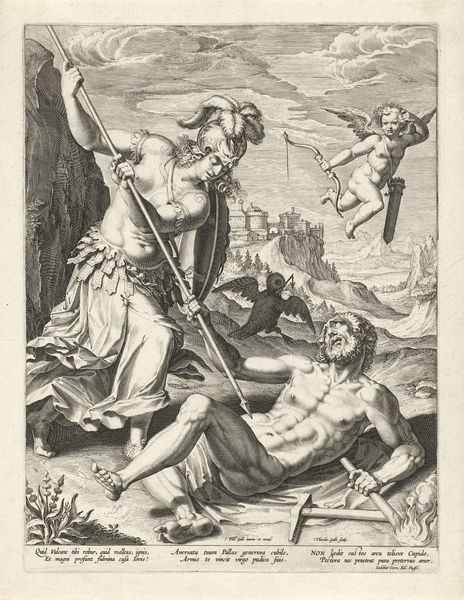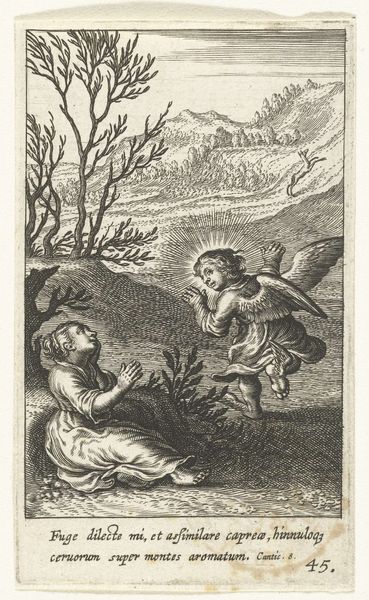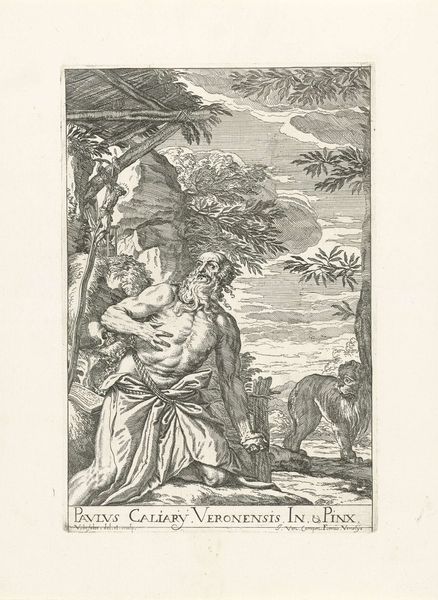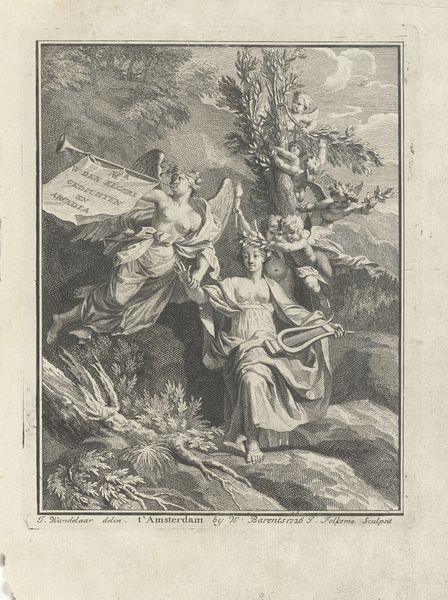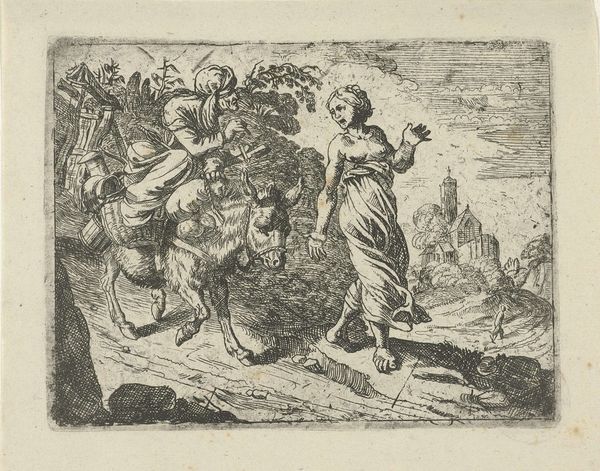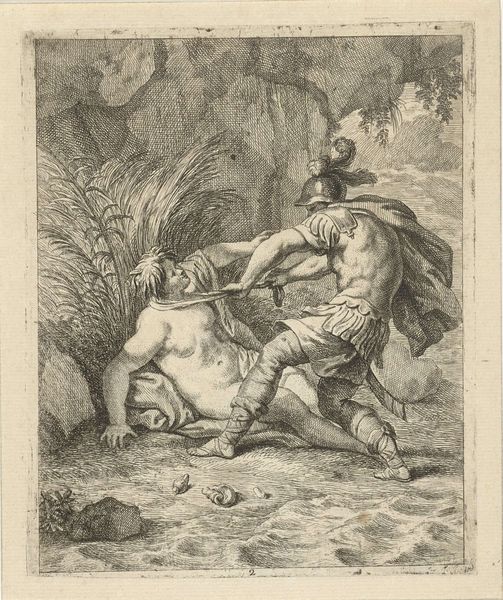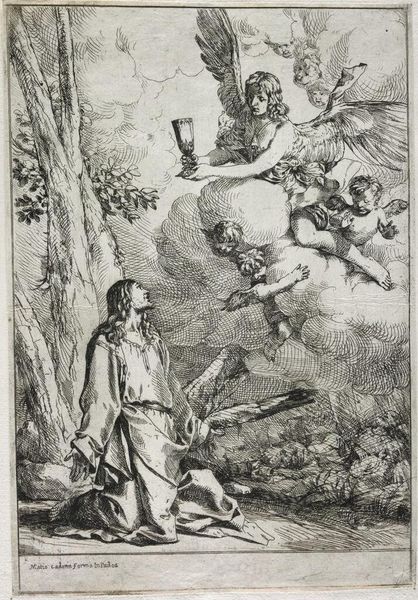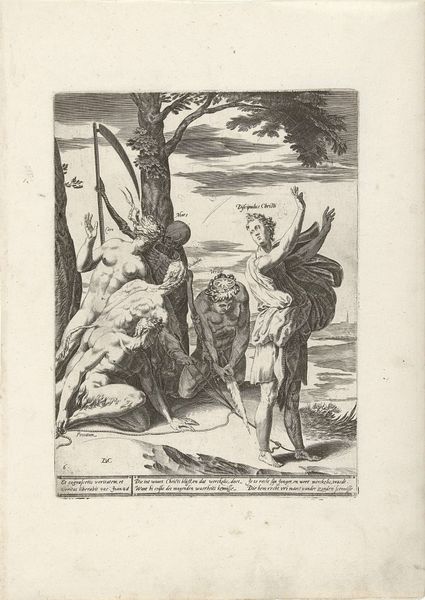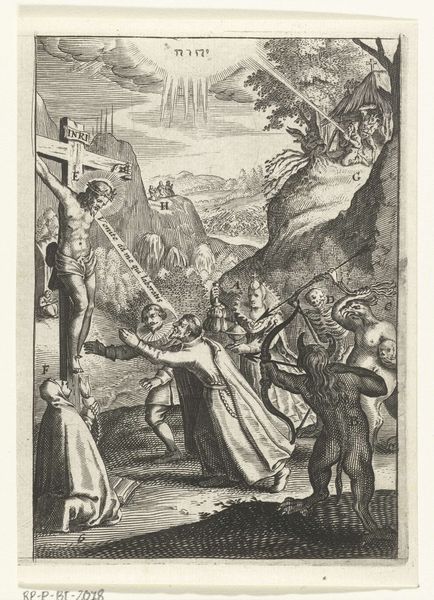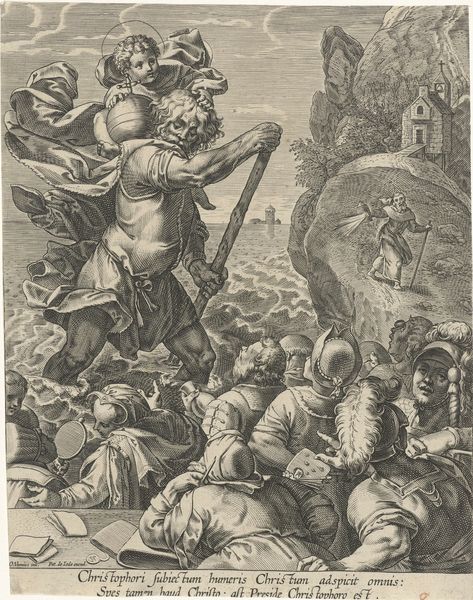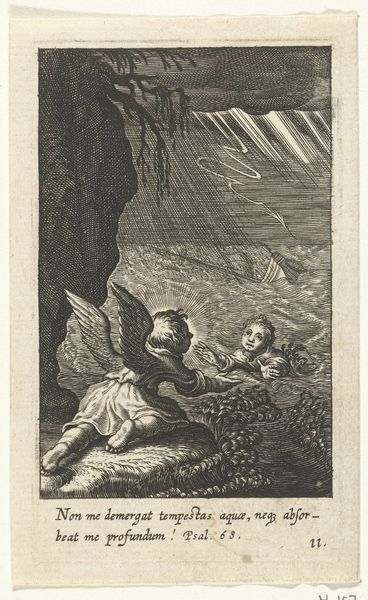
Engel met masker en bliksemschicht maakt kind bang 1590 - 1624
0:00
0:00
print, engraving
#
narrative-art
#
baroque
# print
#
old engraving style
#
figuration
#
line
#
history-painting
#
engraving
Dimensions: height 95 mm, width 57 mm
Copyright: Rijks Museum: Open Domain
Editor: Here we have Boëtius Adamsz. Bolswert's engraving, "Engel met masker en bliksemschicht maakt kind bang", which translates to "Angel with mask and lightning makes child afraid". It's from sometime between 1590 and 1624. The scene feels intensely dramatic and a bit disturbing. What’s your take on this, given its historical context? Curator: I see a fascinating interplay of power and fear, reflected in both the divine and the human figures. It's crucial to remember that Baroque art often served as a tool for social and religious control. Consider how the artist uses the figure of a masked angel wielding lightning to instill terror. The mask itself is key: it disguises power, making it even more menacing. Who is the masked figure meant to represent, and who is it trying to scare? Is it really an "angel"? Editor: It’s interesting that you say “tool”. It makes me wonder about the use of such violent imagery at that time. Curator: Exactly! What anxieties and societal norms do you think are at play here? Is the child a symbol of innocence, threatened by a seemingly divine authority figure? Notice also the landscape, the divine presence – perhaps God himself – lurking in the background, seemingly colluding with this oppressive figure. The child shrinks and cowers while even their little animal companion attempts to protect them, revealing much about who is protected and served by this social hierarchy. Editor: So it's less about divine guidance and more about social coercion? Curator: Precisely! Bolswert invites us to question authority, to dissect the power dynamics between the celestial and the terrestrial. I wonder how different audiences interpreted this imagery then and how we do now, through a critical lens? Editor: I hadn’t thought about it in terms of challenging authority. Seeing it as a commentary on power rather than a straightforward religious scene shifts the whole meaning for me. Curator: And it makes it powerfully relevant to our ongoing examination of identity, authority, and representation even today. This small print holds an awful lot!
Comments
No comments
Be the first to comment and join the conversation on the ultimate creative platform.
